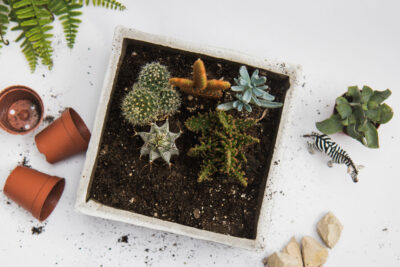
Discover the Spectacular Bloom Time of Sunrise Succulents

Sunrise succulents are a unique and mesmerizing type of plant that captivate both gardening enthusiasts and casual nature lovers alike. These succulents are known for their stunning display of vibrant colors and intricate patterns, making them a popular choice for indoor and outdoor gardens. Understanding the bloom time of sunrise succulents is essential for ensuring their optimal growth and enjoying their beauty to the fullest.
We will delve into the world of sunrise succulents and explore their bloom time in detail. We will discuss the factors that influence their flowering period, such as light exposure, temperature, and water requirements. Additionally, we will provide tips and techniques on how to care for sunrise succulents to maximize their blooming potential. Whether you are a seasoned gardener or a beginner, this article will serve as a comprehensive guide to understanding and appreciating the spectacular bloom time of sunrise succulents.
- Research the optimal growing conditions for Sunrise Succulents
- Provide ample sunlight for Sunrise Succulents to thrive
- Water Sunrise Succulents sparingly to prevent overwatering
- Use well-draining soil to ensure proper root development for Sunrise Succulents
- Protect Sunrise Succulents from extreme temperatures and frost
- Fertilize Sunrise Succulents regularly to promote healthy growth
- Prune Sunrise Succulents to maintain their shape and prevent overcrowding
- Propagate Sunrise Succulents by taking stem cuttings or leaf cuttings
- Monitor Sunrise Succulents for signs of pests or diseases and take appropriate action
- Enjoy the stunning display of vibrant colors and unique shapes during bloom time
- Frequently Asked Questions
Research the optimal growing conditions for Sunrise Succulents
If you want to cultivate Sunrise Succulents successfully, it is essential to understand the optimal growing conditions they require. These vibrant and eye-catching plants thrive in specific environments that mimic their natural habitat.
Sunlight: Sunrise Succulents are sun-loving plants that require bright, indirect light for at least six hours a day. Placing them near a south-facing window or in a well-lit area of your garden will ensure they receive ample sunlight.
Temperature: These succulents prefer moderate temperatures between 65°F and 80°F (18°C and 27°C). Avoid exposing them to extreme heat or cold, as it can cause stress and damage the plant.
Watering: One of the critical aspects of caring for Sunrise Succulents is maintaining a proper watering routine. These plants are drought-tolerant and should be watered sparingly. Allow the soil to dry out completely between waterings to prevent overwatering, which can lead to root rot.
 Will Succulents Survive Freezing Temperatures If Left Outdoors?
Will Succulents Survive Freezing Temperatures If Left Outdoors?Soil: Good drainage is crucial for the health of Sunrise Succulents. Use a well-draining succulent or cactus mix to ensure excess water can easily escape the pot. Adding perlite or coarse sand can enhance the drainage capabilities of the soil.
Fertilizer: While Sunrise Succulents do not require frequent fertilization, a balanced succulent fertilizer can be applied sparingly during the growing season. Follow the instructions on the fertilizer package and avoid over-fertilizing, as it can harm the plant.
Recommended Care Tips for Sunrise Succulents:
- Place your Sunrise Succulents in a location with ample indirect sunlight.
- Water the plants only when the soil is completely dry.
- Ensure proper drainage by using a well-draining succulent mix.
- Avoid exposing the succulents to extreme temperatures.
- Fertilize sparingly during the growing season.
By providing your Sunrise Succulents with the optimal growing conditions, you can enjoy their stunning display of colors and textures all year round. Remember to monitor their growth closely and adjust their care routine accordingly to ensure their continued health and beauty.
Provide ample sunlight for Sunrise Succulents to thrive
Sunrise Succulents are known for their vibrant colors and stunning blooms. To ensure these beautiful plants thrive and reach their full potential, it is crucial to provide them with ample sunlight.
Sunlight Requirements:
- Sunrise Succulents require at least 6-8 hours of direct sunlight per day to flourish.
- Place them in a sunny location, such as a south-facing window or a spot in your garden that receives plenty of sunlight.
- Ensure that there are no obstructions, such as tall buildings or trees, blocking the sunlight from reaching the plants.
Signs of Inadequate Sunlight:
If Sunrise Succulents do not receive enough sunlight, they may exhibit certain signs indicating their distress. Watch out for these signs:
 Ideal Growing Conditions for Succulent Plants: Full Sun or Shade?
Ideal Growing Conditions for Succulent Plants: Full Sun or Shade?- Stretching: The succulent's stems may become elongated and weak as they reach for more light.
- Color Fading: The vibrant colors of the leaves may start to fade or become dull.
- Leggy Growth: The succulent may grow leggy, with sparse leaves and longer stems.
Tips for Providing Adequate Sunlight:
- Rotate the succulent regularly to ensure all sides receive equal amounts of sunlight.
- Consider using a grow light if you do not have access to sufficient natural sunlight.
- Be cautious of placing the succulents directly under intense, midday sun, as it may scorch the leaves. Gradually introduce them to direct sunlight to avoid shock.
Remember, sunlight is crucial for the health and blooming of Sunrise Succulents. By providing them with the right amount of sunlight, you will be rewarded with vibrant and breathtaking blooms that will enhance the beauty of your indoor or outdoor space.
Water Sunrise Succulents sparingly to prevent overwatering
When it comes to caring for Sunrise Succulents, one important aspect to keep in mind is the watering routine. These stunning plants have adapted to survive in dry and arid conditions, making them highly resilient to drought. Therefore, it's crucial to water them sparingly to prevent overwatering, which can lead to root rot and other issues.
Unlike other succulents, Sunrise Succulents have a unique bloom time that occurs during the early morning hours. This is when their vibrant flowers open up, displaying a spectacular array of colors that range from soft pinks to fiery oranges. To ensure optimal blooming, it's essential to provide the right amount of water.
When watering Sunrise Succulents, wait until the soil is completely dry before giving them a thorough soak. This usually means watering them once every two to three weeks, depending on the climate and humidity levels in your area. The key is to water deeply, allowing the water to penetrate the soil and reach the roots.
It's important to note that Sunrise Succulents prefer well-draining soil to prevent water from pooling around their roots. To achieve this, you can mix regular potting soil with perlite or pumice to increase the drainage ability. This will help prevent waterlogged soil and ensure the succulents receive the right amount of moisture.
Additionally, it's crucial to avoid getting water on the leaves or flowers of Sunrise Succulents, as this can cause them to rot or develop fungal diseases. Instead, aim to water directly at the base of the plant, allowing the water to soak into the soil without touching the foliage.
 Succulents and Frost: Unveiling Their Cold Hardy Traits
Succulents and Frost: Unveiling Their Cold Hardy TraitsDuring the cooler months or when Sunrise Succulents enter a dormant period, reduce watering frequency to once every four to six weeks. This mimics their natural environment and helps prevent excessive moisture during periods of slower growth.
Remember, overwatering is one of the most common mistakes made when caring for succulents. By following these watering guidelines and paying attention to the specific needs of Sunrise Succulents, you can enjoy their breathtaking bloom time and keep them healthy and thriving for years to come.
Use well-draining soil to ensure proper root development for Sunrise Succulents
When it comes to cultivating Sunrise Succulents, one of the most crucial factors for their growth and overall health is the type of soil you use. These stunning plants require well-draining soil to prevent waterlogging, which can lead to root rot and other issues.
Well-draining soil ensures that excess water can easily flow through the pot or garden bed, allowing the roots to breathe and preventing them from becoming waterlogged. This is particularly important for Sunrise Succulents as they are native to arid regions and have adapted to survive in dry conditions.
When selecting soil for your Sunrise Succulents, opt for a mix specifically designed for succulents or cacti. These blends usually contain a combination of organic matter, such as peat moss or coconut coir, and inorganic materials like perlite or pumice. These components help create the perfect balance of moisture retention and drainage.
While it may be tempting to use regular potting soil, it is generally not recommended for Sunrise Succulents. Regular potting soil tends to retain too much moisture, which can lead to root rot and other fungal diseases. Additionally, it may not provide the necessary aeration that succulents need to thrive.
When planting your Sunrise Succulents, ensure that the soil is well-draining by adding a layer of small rocks or gravel at the bottom of the pot or garden bed. This will help improve drainage and prevent water from pooling around the roots.
 The Limit of Succulent Plant Growth: How Large Can They Grow?
The Limit of Succulent Plant Growth: How Large Can They Grow?Remember to water your Sunrise Succulents sparingly, allowing the soil to dry out between waterings. Overwatering is one of the most common mistakes made when caring for succulents, so it's essential to strike the right balance.
By using well-draining soil, you can provide your Sunrise Succulents with the ideal growing conditions for their root development. This will help them thrive and achieve their spectacular bloom time, showcasing their vibrant colors and unique forms.
Protect Sunrise Succulents from extreme temperatures and frost
When it comes to ensuring the health and longevity of your Sunrise Succulents, protecting them from extreme temperatures and frost is crucial. These vibrant and eye-catching plants are known for their ability to thrive in sunny and warm conditions, but they can be sensitive to cold weather and sudden temperature drops.
To shield your Sunrise Succulents from the potential damage caused by extreme temperatures and frost, here are some essential tips to keep in mind:
1. Provide Adequate Shelter
During winter or in regions with harsh climates, it's essential to provide adequate shelter for your Sunrise Succulents. Consider moving them indoors or placing them in a greenhouse to protect them from freezing temperatures and frost. If you choose to keep them outdoors, ensure they are in a sheltered spot, such as against a south-facing wall, to minimize exposure to cold winds.
2. Use Protective Covers
Shielding your Sunrise Succulents with protective covers is another effective way to guard them against extreme temperatures and frost. Use materials like frost blankets, burlap, or even old bed sheets to cover the plants during cold snaps or frosty nights. Remember to remove the covers during the day to allow sunlight and air circulation, preventing excessive moisture buildup.
 Do Succulents Need Sunlight in Winter?
Do Succulents Need Sunlight in Winter?3. Avoid Overwatering
Overwatering can be a common mistake when it comes to caring for succulents. During colder months, it's crucial to adjust your watering routine to prevent waterlogged soil, which can lead to root rot and other issues. Allow the soil to dry out between waterings, as the succulents' water needs decrease in cooler temperatures.
4. Mulch Around the Plants
Applying a layer of organic mulch around the base of your Sunrise Succulents can provide additional insulation during colder seasons. Mulching helps regulate soil temperature, prevents moisture loss, and protects the roots from extreme temperature fluctuations. Use materials like straw, wood chips, or shredded leaves to create a protective barrier.
By following these essential tips, you can protect your Sunrise Succulents from the detrimental effects of extreme temperatures and frost, ensuring their beauty and health for years to come.
Fertilize Sunrise Succulents regularly to promote healthy growth
When it comes to caring for Sunrise Succulents, one crucial aspect that should not be overlooked is regular fertilization. Fertilizing these stunning plants is essential to promote healthy growth and vibrant blooms. By providing the necessary nutrients, you can ensure that your Sunrise Succulents thrive and dazzle with their stunning colors.
Why is fertilization important?
Fertilization plays a vital role in the overall health and well-being of Sunrise Succulents. These plants require a balanced supply of essential nutrients, including nitrogen, phosphorus, and potassium. Fertilizers provide these nutrients in the right quantities, enabling the succulents to develop strong roots, sturdy stems, and lush foliage.
 The Effects of Direct Sunlight on Succulents: What You Need to Know
The Effects of Direct Sunlight on Succulents: What You Need to KnowChoosing the right fertilizer
When selecting a fertilizer for your Sunrise Succulents, it's crucial to opt for a well-balanced formula specifically designed for succulent plants. Look for a fertilizer with an NPK ratio of 2:1:2 or 3:1:2, indicating the respective proportions of nitrogen, phosphorus, and potassium. This balanced ratio ensures that the succulents receive the correct nutrients without an excess of any particular element.
How often should you fertilize?
It's generally recommended to fertilize Sunrise Succulents every two to four weeks during their active growing season, which usually spans from spring to early fall. During the dormant winter months, it's best to avoid fertilization altogether as the plants require less nutrients during this time. However, always assess the specific needs of your succulents and adjust the fertilization frequency accordingly.
Application methods
There are several ways to apply fertilizer to your Sunrise Succulents. One common method is to dilute the fertilizer with water and apply it directly to the soil around the base of the plants. Another option is foliar feeding, where you spray a diluted fertilizer solution onto the leaves of the succulents. Whichever method you choose, ensure that the fertilizer is evenly distributed and avoid overapplication, as this can lead to nutrient burn.
Additional tips
 Unveiling the Secrets of Succulents' Resilience in the Harsh Desert
Unveiling the Secrets of Succulents' Resilience in the Harsh Desert- Always follow the instructions provided on the fertilizer packaging.
- Water your succulents before applying fertilizer to prevent root burn.
- Consider using organic or slow-release fertilizers for a more sustainable approach.
- Monitor your Sunrise Succulents for any signs of nutrient deficiencies or excesses and adjust the fertilization accordingly.
By incorporating regular fertilization into your care routine, you can ensure that your Sunrise Succulents reach their full potential and reward you with a spectacular bloom time. Happy gardening!
Prune Sunrise Succulents to maintain their shape and prevent overcrowding
Prune Sunrise Succulents for Optimal Growth
Pruning is an essential practice when it comes to maintaining the shape and promoting healthy growth of your Sunrise Succulents. By removing excess growth, you can prevent overcrowding and ensure that your plants receive adequate sunlight and airflow.
When pruning Sunrise Succulents, it is important to use sharp, sterile tools to minimize the risk of damage and disease. Start by identifying any dead or damaged leaves or stems and carefully remove them using clean, precise cuts.
You can also prune to control the size of your succulent. If you notice your Sunrise Succulent becoming too leggy or sprawling, simply trim back the longer stems to encourage a more compact and bushy growth habit. This will not only enhance the aesthetic appeal of your succulent but also promote healthier overall growth.
Tips for Pruning Sunrise Succulents
Here are some tips to keep in mind when pruning your Sunrise Succulents:
- Timing: Prune your succulents during their active growth period, which is typically in the spring or early summer. Avoid pruning during the dormant phase, as this can hinder their ability to recover and regrow.
- Sanitization: Before pruning, ensure that your tools are clean and sanitized to prevent the spread of diseases. Wipe the blades with rubbing alcohol or a disinfectant solution between cuts.
- Angle of Cuts: Make clean, angled cuts just above a leaf node or stem joint. This will encourage new growth and prevent unsightly stubs.
- Remove Overcrowded Growth: If you notice any overcrowded areas, where stems or leaves are tightly packed, carefully remove the excess growth to improve air circulation and reduce the risk of pests and diseases.
Remember, pruning should always be done with care and precision. Take your time, assess the needs of your Sunrise Succulents, and make strategic cuts to ensure their long-term health and visual appeal.
 Managing Sun Stress: How Succulents Cope with Excessive Sun Exposure
Managing Sun Stress: How Succulents Cope with Excessive Sun ExposurePropagate Sunrise Succulents by taking stem cuttings or leaf cuttings
Propagation is a popular method for expanding your collection of Sunrise Succulents. There are two main techniques you can use: stem cuttings and leaf cuttings.
Stem Cuttings
To propagate Sunrise Succulents using stem cuttings, follow these simple steps:
- Select a healthy stem: Look for a stem that appears firm and free from any signs of damage or disease.
- Prepare the cutting: Using a sharp and sterile knife or shears, cut a piece of the stem that is approximately 4-6 inches long.
- Remove the lower leaves: Strip off the bottom few leaves from the cutting, leaving a bare stem.
- Allow the cutting to callus: Place the cutting in a dry and shaded area for a few days to allow the cut end to form a callus. This helps prevent rotting when planted.
- Plant the cutting: Once the cutting has callused, plant it in a well-draining soil mix, burying the cut end about an inch deep.
- Provide appropriate care: Place the newly planted cutting in a bright area with indirect sunlight and water sparingly, allowing the soil to dry out between waterings.
- Watch for new growth: After a few weeks, you should start to see new roots and leaves forming, indicating successful propagation.
Leaf Cuttings
If you prefer propagating Sunrise Succulents using leaf cuttings, here's what you need to do:
- Select a healthy leaf: Choose a plump and undamaged leaf from the plant.
- Remove the leaf: Gently twist the leaf off the stem, ensuring that the entire leaf is intact.
- Allow the leaf to callus: Place the leaf on a dry surface in a shaded area for a few days until a callus forms at the bottom of the leaf.
- Prepare a tray with well-draining soil: Fill a tray or container with a well-draining soil mix suitable for succulents.
- Place the leaf onto the soil: Lay the callused end of the leaf on top of the soil, pressing it gently to ensure good contact.
- Water sparingly: Mist the soil lightly or use a spray bottle to water the leaf, keeping it slightly moist but not overly wet.
- Be patient: It may take several weeks or even months for tiny new plants, known as pups, to emerge from the base of the leaf.
- Transplant the pups: Once the pups have developed a few leaves and roots, carefully separate them from the leaf and replant them in individual pots.
By following these propagation methods, you can easily multiply your Sunrise Succulent collection and share the beauty of these stunning plants with fellow succulent enthusiasts.
Monitor Sunrise Succulents for signs of pests or diseases and take appropriate action
Keeping an eye on the health of your Sunrise Succulents is crucial to ensure they continue to thrive and bloom beautifully. Pests and diseases can hinder their growth and impact their overall appearance. By regularly monitoring your plants, you can catch any issues early on and take appropriate action. Here are some essential steps to help you keep your Sunrise Succulents pest and disease-free:
 Can Succulents Thrive in Outdoor Summer Conditions?
Can Succulents Thrive in Outdoor Summer Conditions?1. Regularly inspect your plants
Take the time to closely examine your Sunrise Succulents on a regular basis. Look for any signs of pests, such as aphids, mealybugs, or spider mites. Additionally, keep an eye out for symptoms of diseases like root rot or powdery mildew. Early detection is key to preventing any potential damage to your plants.
2. Remove pests manually
If you spot any pests on your Sunrise Succulents, it's important to act quickly. Gently remove them by hand or with a soft brush. Be cautious when handling your plants, as some succulents may have spines or thorns. For stubborn infestations, you can also use a natural insecticidal soap or horticultural oil, following the manufacturer's instructions.
3. Provide proper growing conditions
Healthy, well-maintained plants are less susceptible to pests and diseases. Ensure your Sunrise Succulents are receiving the right amount of sunlight, water, and nutrients. Overwatering can lead to root rot, so make sure the soil has proper drainage. Avoid overcrowding your plants, as it can create a favorable environment for pests and diseases to spread.
4. Quarantine infected plants
If you notice any signs of pests or diseases on one of your Sunrise Succulents, it's crucial to isolate the affected plant immediately. This will prevent the infestation or infection from spreading to other healthy plants. Keep the quarantined plant away from your other succulents until the issue has been resolved.
5. Seek professional help if needed
If you're unsure about the specific pest or disease affecting your Sunrise Succulents, or if you're struggling to control the issue on your own, don't hesitate to seek professional assistance. Consult with a local nursery or a horticulturist who can provide expert advice and recommend suitable treatments.
By diligently monitoring your Sunrise Succulents and taking prompt action against pests or diseases, you can ensure that your plants continue to bloom spectacularly. Remember, prevention is always better than cure when it comes to the health of your beloved succulents!
Enjoy the stunning display of vibrant colors and unique shapes during bloom time
When it comes to succulents, the Sunrise variety stands out with its breathtaking display of colors and shapes during bloom time. Whether you're a seasoned succulent enthusiast or a novice gardener, witnessing the vibrant transformation of these plants is truly a sight to behold.
 Succulent Flowering Times: When Do They Bloom?
Succulent Flowering Times: When Do They Bloom?Unleashing a Colorful Symphony
As the name suggests, Sunrise Succulents are known for their ability to create a stunning color palette reminiscent of a picturesque sunrise. During bloom time, these succulents showcase a vibrant array of hues ranging from vibrant pinks and oranges to deep purples and fiery reds. The striking color combination is a true visual treat that can instantly elevate the aesthetics of any garden or indoor space.
A Symphony of Shapes
Aside from their captivating colors, Sunrise Succulents also captivate with their unique and fascinating shapes. Each plant boasts a distinct form, ranging from rosette-like clusters to elongated leaves with serrated edges. Some varieties even feature intricate patterns and textures that add an extra layer of visual interest to their overall appearance.
Easy Care, Stunning Results
One of the reasons why Sunrise Succulents are so popular among plant enthusiasts is their low maintenance nature. These resilient plants are incredibly adaptable and can thrive in various environments, including both indoor and outdoor settings. With minimal care and attention, you can enjoy the magnificent bloom time of Sunrise Succulents year after year.
Tips for Cultivating Sunrise Succulents
- Ensure proper drainage by using well-draining soil.
- Place your succulents in a spot that receives bright, indirect sunlight.
- Water sparingly, allowing the soil to dry out between waterings.
- Protect your succulents from frost and extreme temperatures.
- Consider fertilizing with a succulent-specific fertilizer during the growing season.
Conclusion
With their breathtaking array of colors and unique shapes, Sunrise Succulents are a true marvel of nature. Whether you're a seasoned gardener or just starting your plant collection, these stunning succulents are sure to add a touch of beauty and elegance to any space. So, why not embrace the spectacle of bloom time and bring the vibrant hues of a sunrise into your garden?
Frequently Asked Questions
1. What are Sunrise Succulents?
Sunrise Succulents are a variety of succulent plants that display vibrant colors resembling the hues of a sunrise. They are known for their stunning foliage and unique appearance.
2. How often do Sunrise Succulents bloom?
Sunrise Succulents typically bloom once a year, usually during the spring or summer months. However, the exact blooming period can vary depending on the specific species and growing conditions.
3. How do I care for Sunrise Succulents?
Sunrise Succulents are relatively low-maintenance plants. They require well-draining soil, ample sunlight, and infrequent watering. It's important to avoid overwatering as this can lead to root rot.
4. Can Sunrise Succulents be grown indoors?
Yes, Sunrise Succulents can be grown indoors as long as they receive sufficient sunlight. Place them near a bright window or provide artificial grow lights to ensure they get the light they need.
If you want to read more articles similar to Discover the Spectacular Bloom Time of Sunrise Succulents, you can visit the Growing Conditions category.






You Must Read